After sleeping in a bag for months at a time, I have a better idea on what to look for in a a sleeping bag for long term survival. I currently own four sleeping bags for different climates and conditions. I slept almost 100 nights in a sleeping bag when thru-hiking the Pacific Crest Trail in 2012, and recently, I spent 180 days sleeping in a bag during my survival expedition.
Temperature Rating
The first thing you must consider is the climate where you will be using your bag. You need to find the historical temperatures of your area; I usually search in Wikipedia for the place and check the climate section.
Find the average low temperature for the winter months. That’s your number. Where I live the temperature fluctuates from −21 °C (−6 °F) to + 20 °C (67 °F). This adds a challenge. Because a sleeping bag with a comfort rating of −6 °F is going to be awfully hot in the summer. There are three ways around this. I could use the −6 °F sleeping bag as a heavy blanket, or I could have two bags rated to a warmer temperature that I can also layer up to use during the winter months. A third way is to have a sleeping bag with a warmer comfort rating and sleep with heavy fleece and wool clothes during the coldest months.
The US military has gone with the second option with the modular sleeping bag system. Snugpak, a UK military sleeping bag maker has developed a similar combo bag system with the Special Forces 1 bag that goes into the SF 2 bag for colder weather.
I’ve gone with a combination of the second and third option. I have a bag with an EN comfort rating of -2 °C (28 °F) and another one with a similar temp. rating (Snugpak Elite 3) that I can layer over it. In addition, I could wear heavy fleece clothes during the coldest days.
You can use this table as a very rough reference when layering bags:
| Temp. Ratings | 50ºF | 40ºF | 30ºF | 20ºF | 10ºF | 0ºF |
| 50ºF | 30ºF | 20ºF | 10ºF | 0ºF | -10ºF | -20ºF |
| 40ºF | 20ºF | 10ºF | 0ºF | -10ºF | -20ºF | -30ºF |
| 30ºF | 10ºF | 0ºF | -10ºF | -20ºF | -30ºF | -40ºF |
| 20ºF | 0ºF | -10ºF | -20ºF | -30ºF | -40ºF | |
| 10ºF | -10ºF | -20ºF | -30 | -40 | ||
| 0ºF | -20ºF | -30ºF | -40ºF |
Not all ratings are made equal; don’t trust the manufacturer’s ratings, only the EN ratings are a good reference. The comfort rating is the one that’s important.
The EN comfort rating of your bag should be the same as your expected average low or even colder.
Something that I’ve learned by experience is that if you are in a survival situation, in a depleted state, or in a starved state, your body will lower its metabolism. Meaning you will sleep colder and be colder in general. So take that into consideration if you are looking for a sleeping bag for long term survival. I suggest being sceptical with the temperature ratings.
Insulation Material
Choose synthetic insulation. Down is lighter, but when you sleep in a bag day after day for weeks or months, it will absorb the moisture from your body. A down bag will loose its loft in a long term scenario. Down is also very difficult to dry in the field, in addition to being next to useless when wet.
I’ve read that down lasts longer than synthetic insulation because synthetics lose their loft over time. For long term, continuous use, this is not the case.
Synthetic insulation is bulkier, but high quality bags are relatively close in weight and bulk to their down counterparts. For example the Mountain Hardwear Lamina Z bag (EN comfort rating 32 °F) weights only 2 lbs. 11 oz. and compresses to 8.1 liters.
For short term camping, down works great, but a sleeping bag for long term survival must be synthetic.
Mummy or Rectangular Shape
I prefer mummy bags because they are lighter and warmer than rectangular bags. If you intend to layer two bags then you should consider a sleeping bag with more room to use as your outer bag.
Sleeping Pad
An important thing to remember is that sleeping bag temperature ratings are tested with a sleeping pad (R-value around 5). So make sure one is part of your system. The higher the R-value of your pad, the more insulated it is. Some pads that I would recommend for long term use:
The Z-lite, is the “compact”, folding pad that I used during my PCT thru hike. It is extremely durable and light, although not very portable compared to an inflatable pad. R-value 2.6, 14 oz.
The NeoAir XTherm, is an ultralight inflatable sleeping pad; it took me four years to destroy the less durable version of this pad, so I trust that it can last a year if properly cared for. R-value 5.7, 15 oz.
Sleeping Bag for Long Term Survival
A sleeping bag is one of the top essential items to have in a long term survival scenario. Right there with a good knife and a fire starter. A high quality synthetic sleeping bag is worth its weight in gold; in a survival situation they are a game changer.


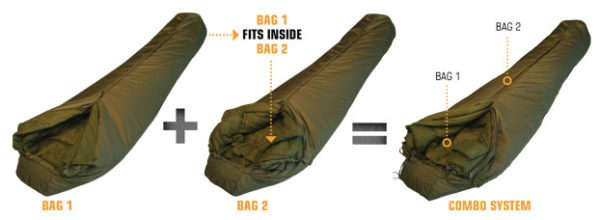
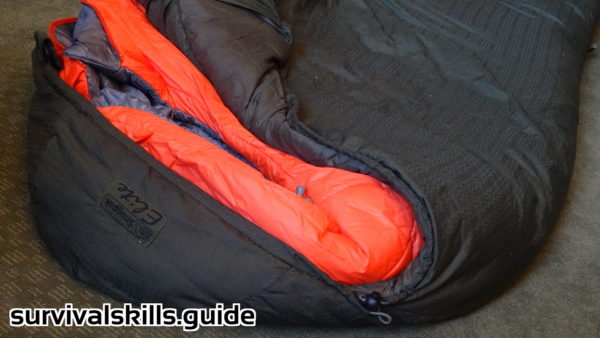
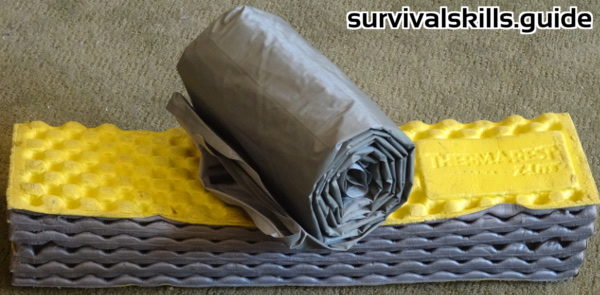
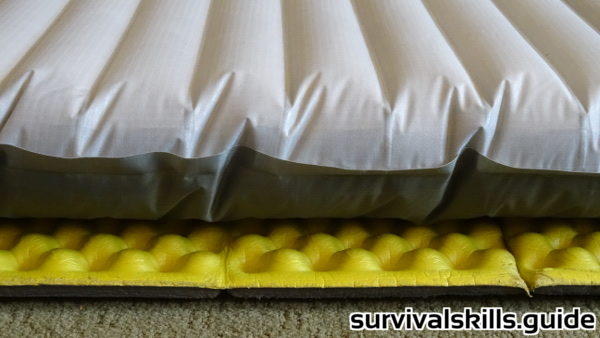
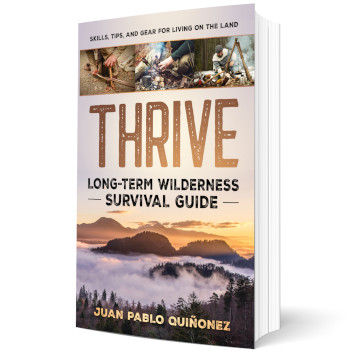
A cover is an easier way to add r value and venting and water protection
Your last three sentences nailed it on the head when you said “A sleeping bag is one of the top essential items to have in a long term survival scenario. Right there with a good knife and a fire starter. A high quality synthetic sleeping bag is worth its weight in gold; in a survival situation they are a game changer.”
One quality sleeping bag is heavy and bulky on its own, two would be great. But if you are carrying everything long distances on your back, then two is just too much unless you are in antartica etc. I take one quality sleeping bag and one quality waterproof bivvy bag. This ensures the sleeping bag stays dry and adds some extra warmth with the additional layer it adds and how it acts as a wind breaker. Adding a strong cram bag can help protect both the bags inside your pack and the cram bag can act as a pillow case if you choose to throw some extra clothes into it, you want a bigger cram bag so its shape can fit the inside of your pack better by taking up space better. Or you could just push the two bags to the bottom of the pack as this allows them to take up space more effectively.
Yet again, this is a great guide. You deserve far more recognition world wide as an expert.